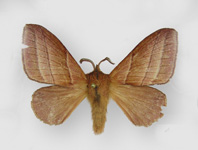Abstract
Anacampsis rhoifructella (Clemens) (Lepidoptera: Gelechiidae) was described from individuals reared from larvae collected in fruit racemes of staghorn sumac, Rhus typhina (Anacardiaceae). Rearing efforts in central Illinois, however, have established that A. rhoifructella actually feeds on leaves of Viburnum prunifolium (Caprifoliaceae). Furthermore, a second Anacampsis species also feeds on leaves of V. prunifolium. The second species is very similar to A. rhoifructella in external appearance of the adult and in larval feeding mode but is readily differentiated on basis of larval appearance, phenology, and genital morphology of both genders. Examination of type specimens of Gelechia consonella Zeller, G. quadrimaculella Chambers, and G. ochreocostella Chambers, all of which were previously designated as junior synonyms of A. rhoifructella, revealed that the valid name of the second species is Anacampsis consonella (Zeller, 1873), revised status; G. ochreocostella and G. quadrimaculella are assigned as junior synonyms of A. consonella. We provide descriptions and illustrations of characters that reliably differentiate A. rhoifructella from A. consonella. We conclude that Clemens’ record of A. rhoifructella feeding on fruits of sumac is erroneous, and we offer an explanation of how the error probably occurred.

